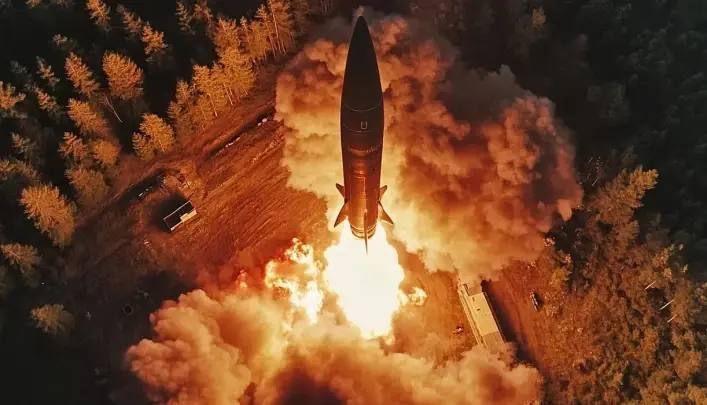A New Hypersonic Weapon in the Ukraine Conflict
A Strategic Response to Escalation
On November 21, Russian President Vladimir Putin announced the deployment of a new hypersonic missile, the “Oreshnik” (Hazel Tree), targeting a defense facility in Ukraine’s Dnipro region. This action followed Ukraine’s use of U.S. and British missiles to strike Russian territory, marking a significant escalation in the ongoing conflict. Putin warned that these developments bring the war closer to a global confrontation, signaling Russia’s readiness to respond with advanced weaponry.
Hypersonic Capabilities: Speed and Range
The Oreshnik is described as a hypersonic, medium-range ballistic missile capable of traveling at ten times the speed of sound. This velocity renders it nearly impossible to intercept with current missile defense systems. Russian sources suggest the missile has a range of 5,000 km (3,100 miles), putting much of Europe and parts of the U.S. West Coast within striking distance.

Equipped with multiple independently targetable re-entry vehicles (MIRVs), the Oreshnik can carry six to eight warheads. Each warhead can strike a different target, enhancing its tactical value. Analysts like Anatoly Matviychuk believe the missile may already be in service, further heightening concerns about its deployment.
Links to the RS-26 Rubezh
The Pentagon identified the missile as a variant of the RS-26 Rubezh, a road-mobile, solid-fuel ballistic missile. Developed in 2008, the RS-26 was initially intended as an intercontinental ballistic missile (ICBM). However, it now appears repurposed for intermediate-range attacks, likely due to the collapse of the 1987 Intermediate-Range Nuclear Forces (INF) Treaty.
The U.S. formally withdrew from the INF Treaty in 2019, accusing Russia of violations. Moscow denied the allegations, but the treaty’s dissolution paved the way for advancements like the Oreshnik.
Reactions from Ukraine and the West
Ukraine’s air force reported the strike as an ICBM attack on Dnipro, but the United States refuted this, maintaining it was an intermediate-range weapon. Ukrainian President Volodymyr Zelensky condemned the missile’s use, calling it a severe escalation. He urged the international community to respond decisively to this new threat.
Meanwhile, the U.S. acknowledged being informed of the launch through nuclear risk reduction channels, reflecting ongoing, albeit strained, communication between the two powers.
Implications for Global Security
The Oreshnik’s deployment underscores Russia’s willingness to escalate its military response while showcasing advancements in hypersonic missile technology. With capabilities to evade defenses and target multiple sites, the missile raises significant concerns for both Europe and the United States. As the conflict intensifies, the international community must address the growing risks of advanced weapon proliferation and potential global repercussions.
Our Visitor






 Users Today : 7
Users Today : 7



